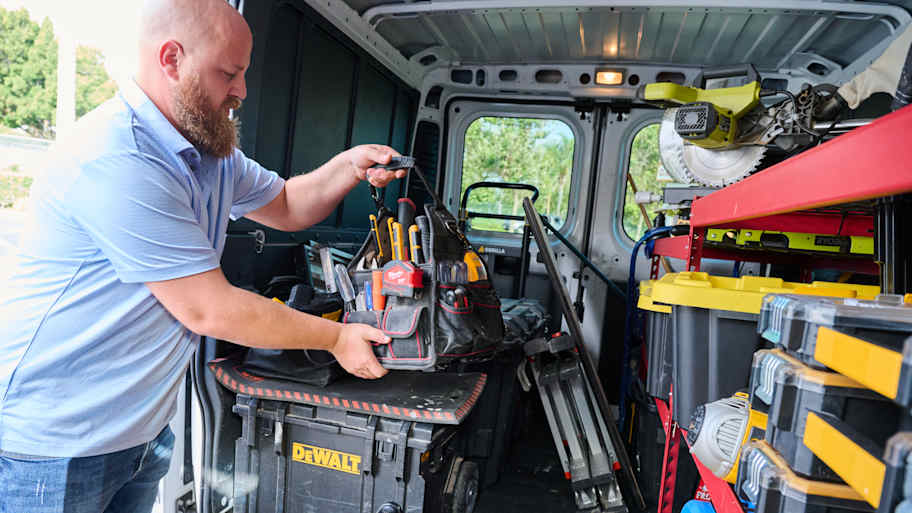8 Types of Electrical Wires You Can Find in Your Home
This guide breaks down the different types of electrical wires in your home and how each one functions


Electricity powers all kinds of things in your home, from everyday appliances like refrigerators and washing machines to your computer, smartphone, and other devices. While electricity has only been widespread for about 100 years, it’s now a necessity of modern life. That said, most homeowners may not know exactly how their electrical wiring actually works.

1. Non-Metallic Cable
A non-metallic, or NM cable, is one of the most common types of electrical wires in modern homes. These cables typically feature a hot wire, a ground wire, and a neutral wire in one sheathing. They’re also sometimes referred to as Romex cables. NM cables are used to conduct electricity throughout your home to switches, outlets, and other appliances.
2. Armored Cable
You may have heard armored cables called AC cables or BX wiring, but they’re all one in the same. This type of cable is often used in areas with stricter rules and regulations surrounding electrical codes, where NM cables may not be allowed. Armored cables are more expensive than NM cables, but they’re also sturdier and safer.
3. Metal-Clad Cable
Metal-clad cables, or MC cables, are covered in a protective metal sheath. This type of cable is sturdier than a typical NM cable and is suitable for areas that may be unfinished or exposed, such as basements.
4. THHN/ THWN Wire
THHN stands for thermoplastic highly heat resistant nylon-coated wire, and THWN stands for thermoplastic heat-resistant wire rated for wet locations. Both of these types of insulated wire are often used to connect appliances with branch circuits.
5. Underground Feeder Cable
An underground feeder cable, or UF cable, is typically used to bring electricity to outdoor spaces. Unlike NM cables, the individual wires are wrapped in plastic and they’re protected against damage from moisture and sunlight. In many cases, these cables are actually buried underground to carry electricity to outbuildings like sheds or detached garages.
6. Low-Voltage Wiring
As the name suggests, low-voltage wires are often used in areas where you don’t need much electricity. They’re suitable for circuits that use less than 50 volts. Some examples of where low-voltage wiring might make sense include very small appliances like doorbells and thermostats.
7. Phone and Data Wire
While most people exclusively use mobile phones, there are plenty of homes that still use a landline telephone. Most homes also use wifi to provide internet connection to their computers and other devices. For these communication setups, you’ll need telephone and data wires.
8. Coaxial Cable

Although coaxial cables are becoming less common, they’re still sometimes used to connect televisions with cable service or satellite dishes. They’re also sometimes used to transmit phone and internet data.
The Difference Between Electrical Cables and Wires
People often refer to electrical cables and wires interchangeably, but they’re actually two slightly different things. Electrical wires conduct electricity and are usually made out of copper or aluminum. Cables are collections of multiple wires wrapped in a protective sheath.
Understanding and Identifying Different Wires
Some types of wires and cables are immediately identifiable, while others require a more careful examination. The size and color of wires can all provide information about what type you’re dealing with.
Size
The size of the wire is an indicator of how much electricity it can conduct. Wire sizes are measured in gauges, which are inversely proportional to the size of the wire. The smaller the gauge number, the bigger the wire will be and the more electricity it can carry.
Common electrical wire sizes in residential homes include:
14-gauge
12-gauge
10-gauge
8-gauge
4-gauge
3-gauge
2-gauge
Color
Wires are color-coded according to their purpose. This helps homeowners and electricians to easily identify different wires. Some common electrical wire colors include:
Black: Hot wires that are used to transmit power to switches and outlets
Red: Also hot wires and often used in switch legs
Blue and yellow: Typically used as “travel wires” that control three- or four-way switches or as switch legs for lights, fans, and other appliances
White or gray: Neutral wires that help to circulate the electrical current
Green or copper: Grounding wires that help to conduct electricity into the ground beneath your home and reduce electrical fires
FAQs about Electrical Wires
Can I complete electrical repairs myself?
While there are plenty of DIY tasks that you can sharpen your handy skills on, home electric repair isn’t one of them. This is because your home’s electrical system can be dangerous if you’re not an experienced electrician, and you could injure yourself or even start an electrical fire in your home.
If you have a question about your home’s electricity or need to conduct a repair, you should contact an electrician near you to discuss your options.
What are some common signs of home electrical problems?
Some signs of home electrical problems include issues with your circuit breaker, flickering lights, shocks, sparks, and burning odors. If you think that anything is amiss, it’s a good idea to get in touch with an electrician or electrical handyperson near you for advice.
How can I save money on electricity?
Electricity may be a modern necessity, but its price can really rack up. However, there are a few ways that you can save money on electricity and lower your electric bill. These include unplugging items you’re not using, updating old appliances, and switching to CFL and LED lighting.



.jpg?impolicy=leadImage)

- Home Generator Repair
- Lamp Repair
- Electric Repair
- Generator Installation
- TV Antenna Services
- Emergency Electricians
- Commercial Electricians
- Attic Fan Installation
- Attic Fan Repair
- Exhaust Fan Installation
- Electric Inspectors
- Subcontractors
- Electrical Construction
- EV Charger Installer
- Chandelier Installation
- Doorbell Installation
- Bathroom Fan Installation
- Ring Installers
- Electrical Panel Upgrade
- Wire Color Code: Decoding Electrical Wire Colors
- How to Distinguish Electrical Wire Types: Your Go-To Chart
- Understanding Wire Gauges: What Gauge Wire Should You Use for Outlets?
- Are Roof Heat Cables Dangerous? What You Should Know
- Is the Black Wire Positive or Negative? How to Tell Electrical Wires Apart
- 20 Tools for Electrical Work To Keep In Your Toolbox
- Who Installs Roof Heat Cables?
- Brown and Blue Wires: Which Is Positive?
- Who Can Run Ethernet Cable Through Your Walls?
- What Is the C-Wire on a Thermostat? Everything You Should Know Before Installation or Repairs










